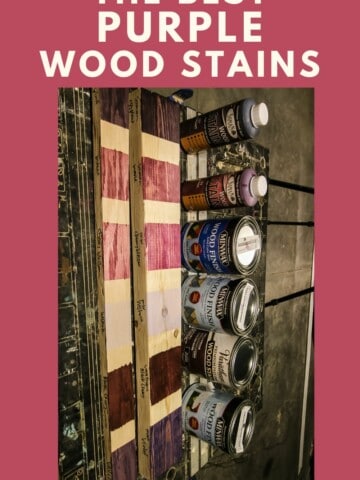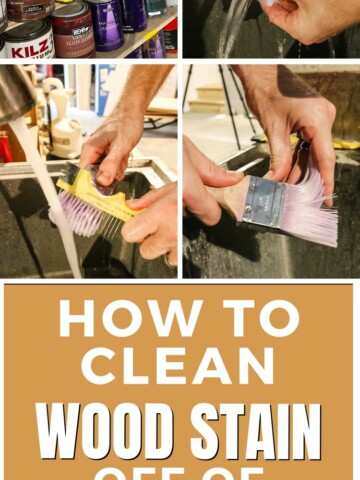Want to add a natural finish to your wood project? Here is a complete guide on when and how to use linseed oil on wood!
We recently put several natural wood sealants to the test, and one of those sealants was Linseed Oil.
Linseed oil is considered an effective and environmentally friendly way to maintain and protect wooden surfaces.
Check out all of our favorite natural wood sealants in action!
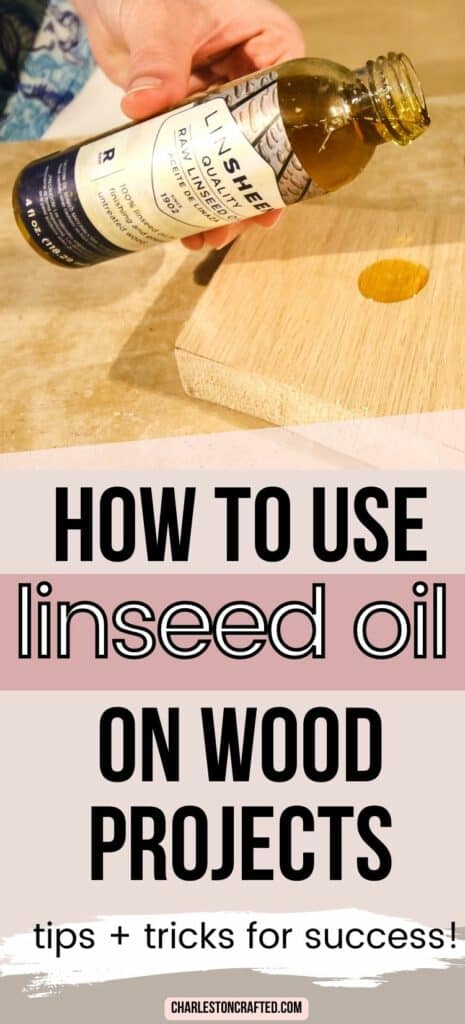
What is linseed oil?
Linseed Oil is extracted from the seed of the flax plant. It has been used for centuries to treat and protect wood.
Linseed oil is a popular natural wood finish that provides protection to the wood surface, as well as giving it a warm, rich appearance.
When applied to wood, linseed oil penetrates the surface to nourish and protect the fibers, while also enhancing the natural beauty of the wood grain.
Does linseed oil set hard?
Linseed oil is a drying oil that dries to have a hard - and not oily - finish once fully cured.
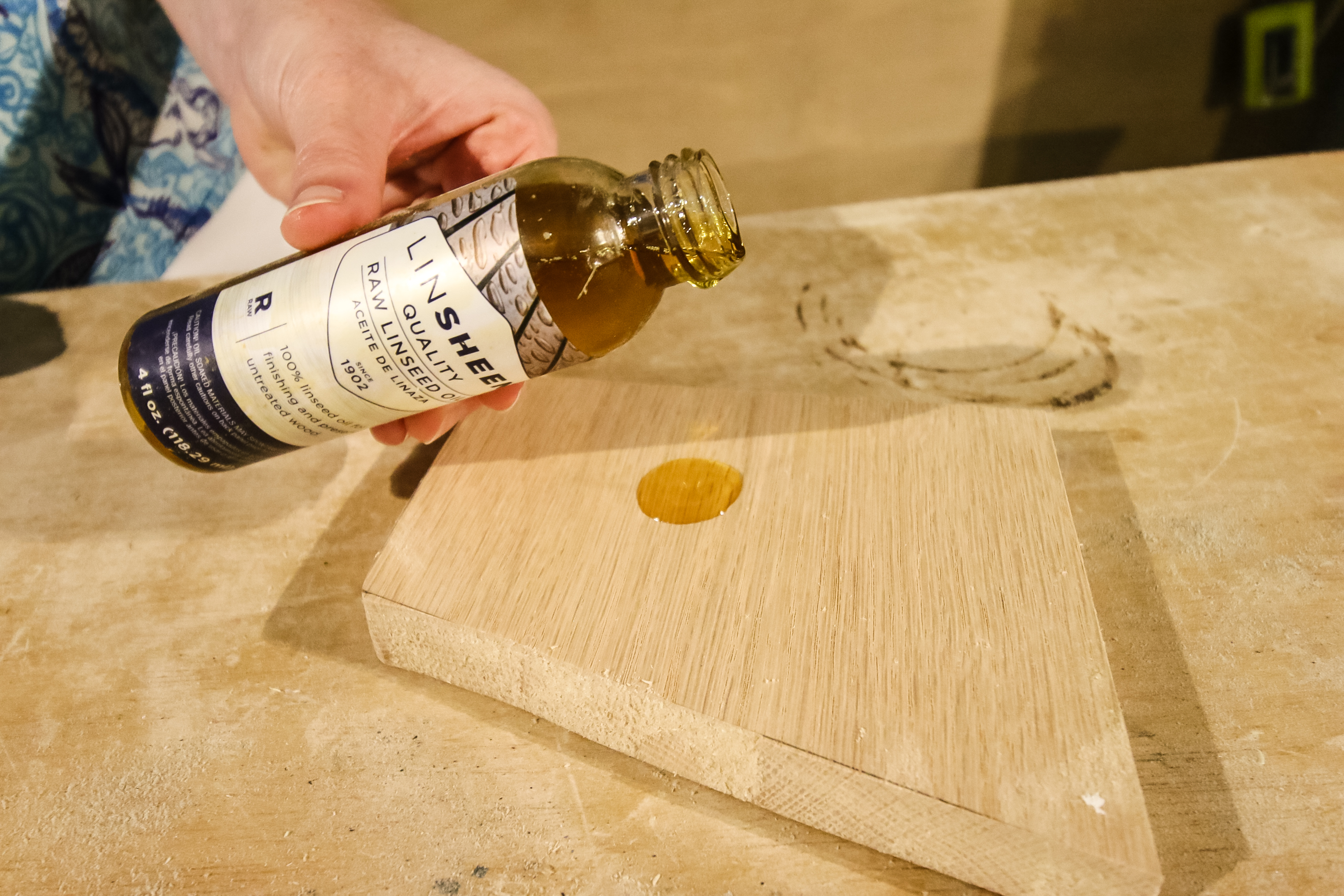
Is linseed oil water resistant?
Linseed oil naturally repels water. However, it is not waterproof and wood sealed with linseed oil can still get water damage (spots, swelling, and warping), especially if water sits on it for a while.
Is linseed oil food safe?
Raw linseed oil is food safe. Boiled linseed oil is toxic when wet but considered food safe once fully cured.
What's the difference between boiled linseed oil and linseed oil?
Boiled linseed oil dries faster than linseed oil. With dry time being one of the major disadvantages of using linseed oil, switching to a boiled oil can be a great solution for many woodworkers!
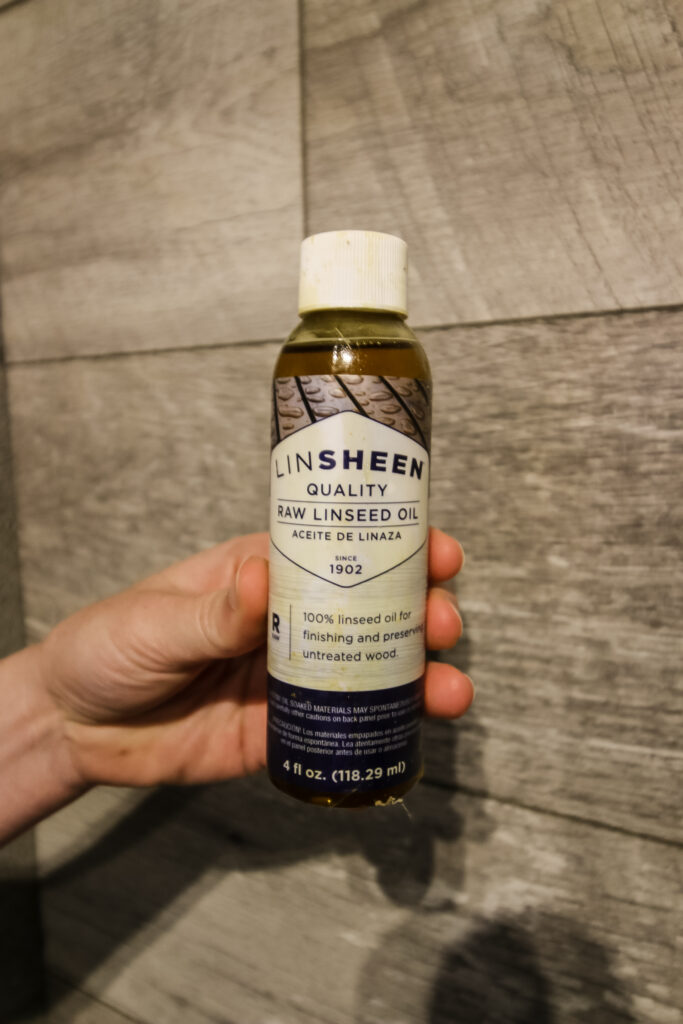
What are the disadvantages of using linseed oil on wood?
While many people like using linseed oil, it does have some major limitations.
- Linseed oil has a long dry time and can take several weeks to fully cure.
- Because it is slow drying, linseed oil can feel tacky or sticky for a long while - causing it to attract dirt and little hairs. Gross!
- There is a risk of spontaneous combustion, especially with rags or cotton cloths soaked in linseed oil. In general, linseed oil is very flamable.
- Linseed oil darkens the wood over time. This means that wood treated with linseed oil will continue to get darker over time. This could be an undesirable result!
Does linseed oil darken wood over time?
Linseed oil can yellow and even darken over time. It actually gets darker when kept in a dark space, and keeping it in bright light will help to keep it from darkening as much!
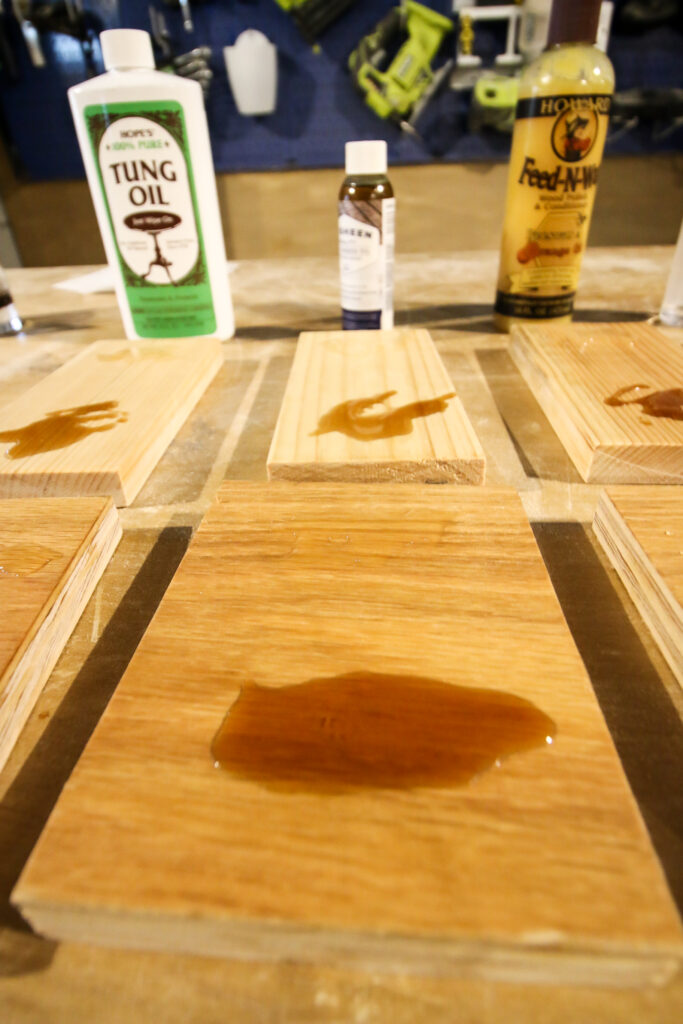
How to prepare wood for linseed oil
It is important to prepare the wood surface before applying linseed oil. If you don't prepare your wood properly, the oil will not absorb and your work will be a waste of time.
The steps involved in preparing your wood include sanding and cleaning.
STEP 1: Sand the wood
Sand the surface of the wood with a fine-grit sandpaper (220+ grit) to remove any rough patches or splinters.
Do this even if the wood feels smooth - there might be a light coating on the wood that will prevent the oil from absorbing.
This will help the linseed oil penetrate evenly into the wood fibers.
STEP 2: Clean the wood
Use a clean, damp cloth to wipe away any dust or debris from the surface of the wood.
This will ensure that the oil adheres properly and doesn't mix with any loose particles.
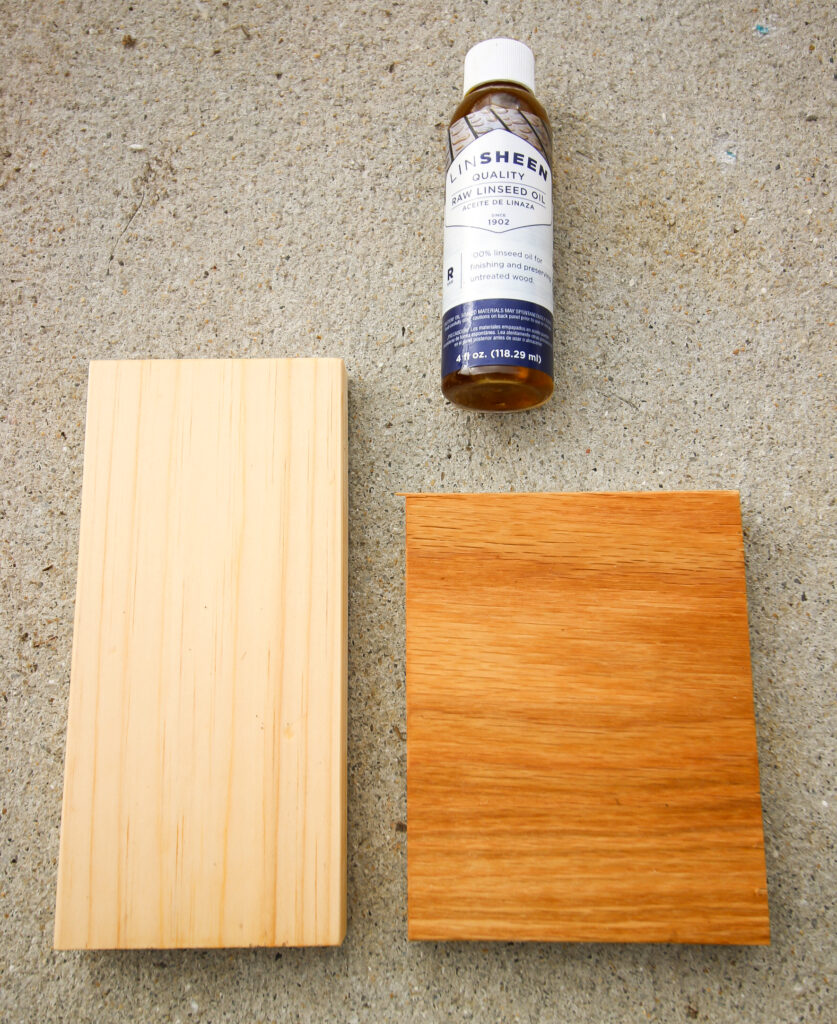
How to apply linseed oil
The best methods for applying linseed oil to wood projects include using a brush or cloth.
Always wear gloves when applying linseed oil to help with easy clean up.
STEP 1: apply oil
Rub the oil into the wood with circular motions. Move in the direction of the grain of the wood when possible to help encourage the oil into the wood grain.
Work in small sections - I stick to 12"x12" areas - at a time before pouring more oil.
STEP 2: wipe away excess
Let the oil sit for 15 minutes to absorb as much as possible, then wipe away any excess.
STEP 3: repeat
It is important to apply linseed oil in thin layers and allowing each layer to dry before applying another
When should I use linseed oil on wood?
Linseed oil can be applied on wood that is raw, previously oiled, or stained. It can NOT be applied over wood that has been painted or previously sealed - it will not absorb into those furniture finishes.
How many coats of linseed oil on bare wood?
You generally want three coats of linseed oil for good coverage. Of course, use your best judgment as you work on your project to determine when it looks properly sealed!
How long before wiping off linseed oil?
Follow the instructions on your exactly bottle of linseed oil finish, but generally you can wipe off excess oil after 15 minutes.
How long should linseed oil dry between coats?
Check the instructions on your exact bottle of linseed oil for proper dry time. It can vary greatly, especially between boiled and non-boiled (raw) linseed oil.
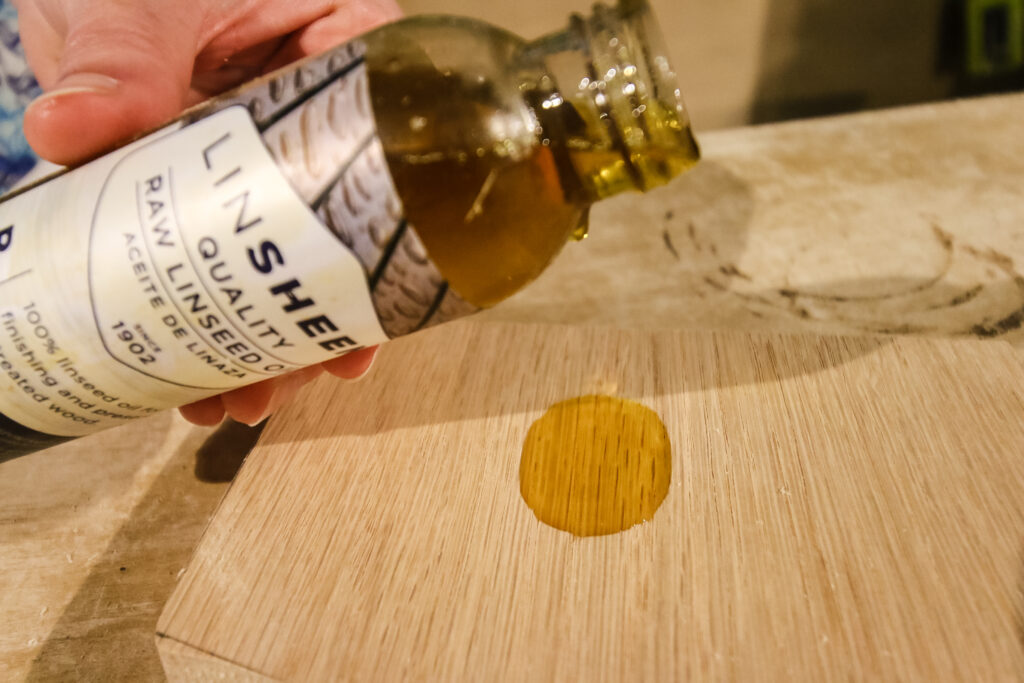
Maintaining linseed oil finish
Of course, once you apply your linseed oil finish, it is not good forever. It's important to maintain the linseed oil finish on wood projects, because it can dry out and fade over time.
The best practices for maintaining a linseed oil finish include regular cleaning and reapplication.
How to clean wood treated with linseed oil
Wipe down your wood surface with a damp cloth, or add a small amount of soapy water. Anything stronger can wipe away the linseed oil finish!
How often to reapply linseed oil
Linseed oil finishes generally need to be reapplied once a year. If you used the sealant in a high traffic area - such as frequently walked floors or a well used countertop, you might need to re-apply twice a year.
Signs that the sealant needs to be re-sealed include the wood turning lighter or looking and feeling dry to the touch.
Do you plan on using linseed oil on your own wood projects? Please share the results!
Looking for something?
We've been doing this since 2012 so we have a LOT of blog posts!
Search stuff like: Ceiling Projects | DIY Plant Stands | Thrift Flips


Hello, I'm Morgan, half of the creative force behind CharlestonCrafted.com! With a passion for DIY that dates back to 2012, I've transformed three homes and now I'm dedicated to helping others craft their dream spaces. Let's turn your house into a home together!



